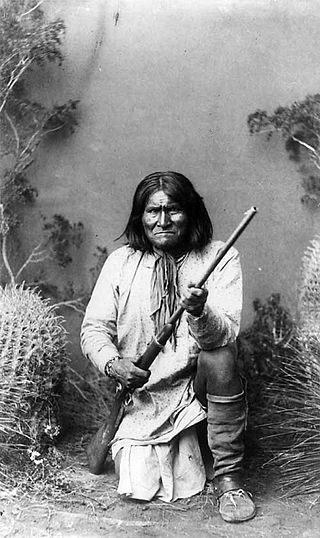The Road to Oblivion
Chris Roberts, American Renaissance, July 1, 2017

Geronimo
Although the average American doesn’t know much about him, everyone has heard of a fearsome Indian warrior named “Geronimo.” Recently, I decided it to learn about the man so I read a lengthy volume about his tribe, the Apaches. The book, and the Apaches, proved interesting enough, but the passage that most struck me was about a different tribe entirely, and was a mere tangent in the first chapter.
Jesuit missionaries, headed by Padre Kino, entered Pimeria Alta during the 1680s. The Piman peoples and Opatas welcomed them and quickly accepted Christianity. . . . Of all the tribes the Spaniards encountered in North America none adopted the Spanish way of life more readily or more successfully than the Opatas. They and the Pimas soon assumed major roles in the Sonora settlements. Because the Opatas had forced their way into Pima territory as they moved along the Yaqui River, there had once been hostility between the two tribes. But as Apache attacks intensified, minor irritations were subordinated to the common problems of survival. Opatas, because of their special relationship with the Spaniards, were called “the spoiled children of the Spanish crown” and “the most valiant, most noble and most loyal among all friendly tribes” — the Tlascaltecas [see below] of the interior land. They intermarried with Spaniards and later with Mexicans to the extent that they disappeared as a distinct tribe, and their language was ultimately replaced by Spanish. [The Apaches: Eagles of the Southwest, Donald E. Worcester, University of Oklahoma Press, 1979, page 13.]
The passage is so matter-of-fact in tone that a reader could be forgiven for missing it. But in the space of about 200 words the author summarizes how a people became extinct simply by collaborating with a newly arrived people. I did some research about them and found that no pure Opatas are thought to be alive, and their language is dead. In the Mexican state of Sonora there are mestizos who know that some of their ancestors were Opata, but next to nothing of the Opata culture remains. This erasure took only 300 years.
The “Tlascaltecas” was another tribe I had never heard of until I read the above passage. I learned that they were longstanding rivals of the Aztecs, so were allies of the Spanish in the 16th century. For their loyalty, the Spanish crown gave them special privileges, and with that elevated status came miscegenation. Like the Opatas, there do not seem to be any pure Tlascaltecas left. Their Wikipedia page is entirely in the past tense. The language they spoke, Nahuatl, is still spoken because the Aztecs also spoke it.
The Apaches and the Aztecs suffered a great deal at the hands of Europeans. Much of what they suffered is hard for today’s whites to imagine. But they still exist. The Apaches live as a distinct people on their reservations. All Americans have heard of them and of Geronimo, and the army named an attack helicopter in honor of the bravery of Apache warriors.
Aztecs in Mexico are certainly less distinct than the Apache and more mixed with other populations, but Aztec heritage is widely honored. Aztec history and iconography are everywhere in Mexico — even in the national flag.
In short, there are fates worse than being conquered. Cooperating with conquerors leads to complete oblivion.















